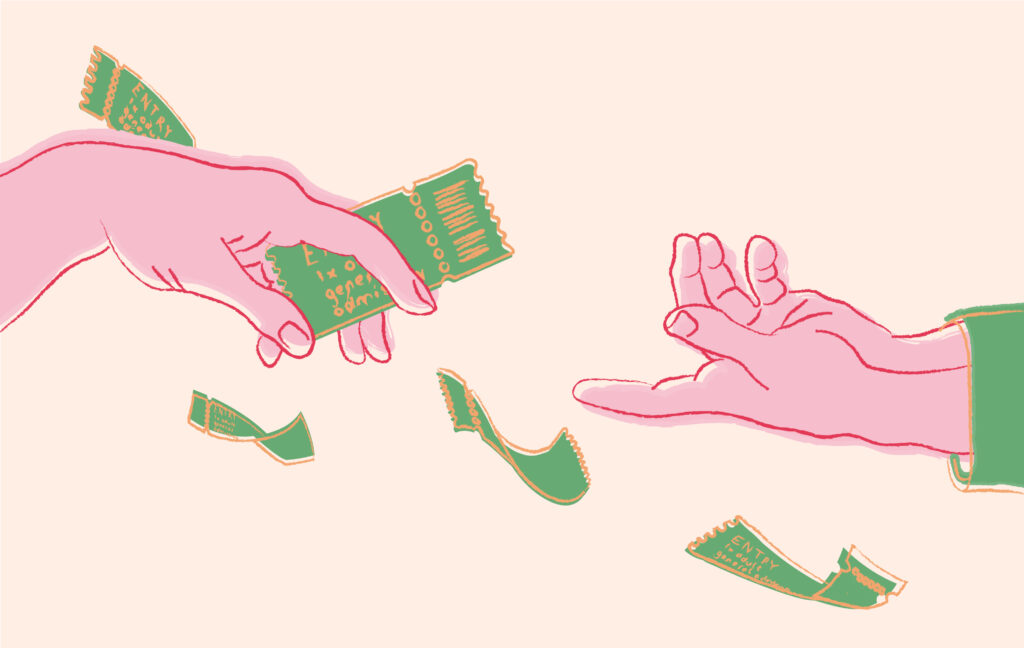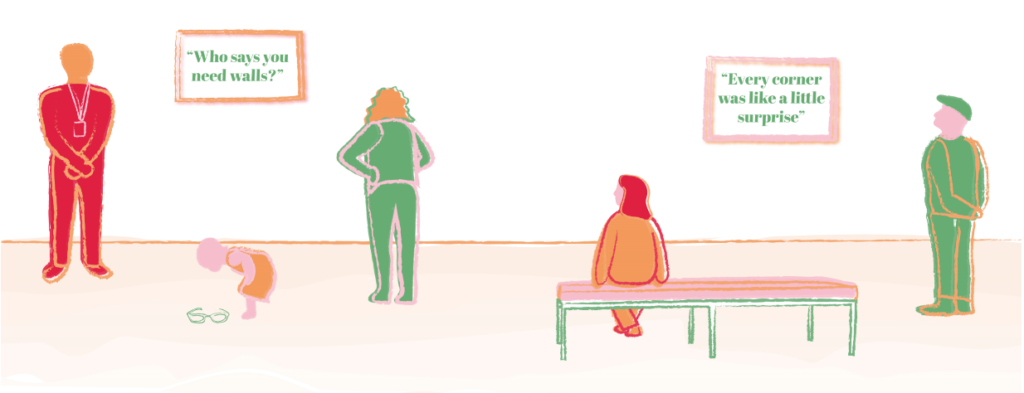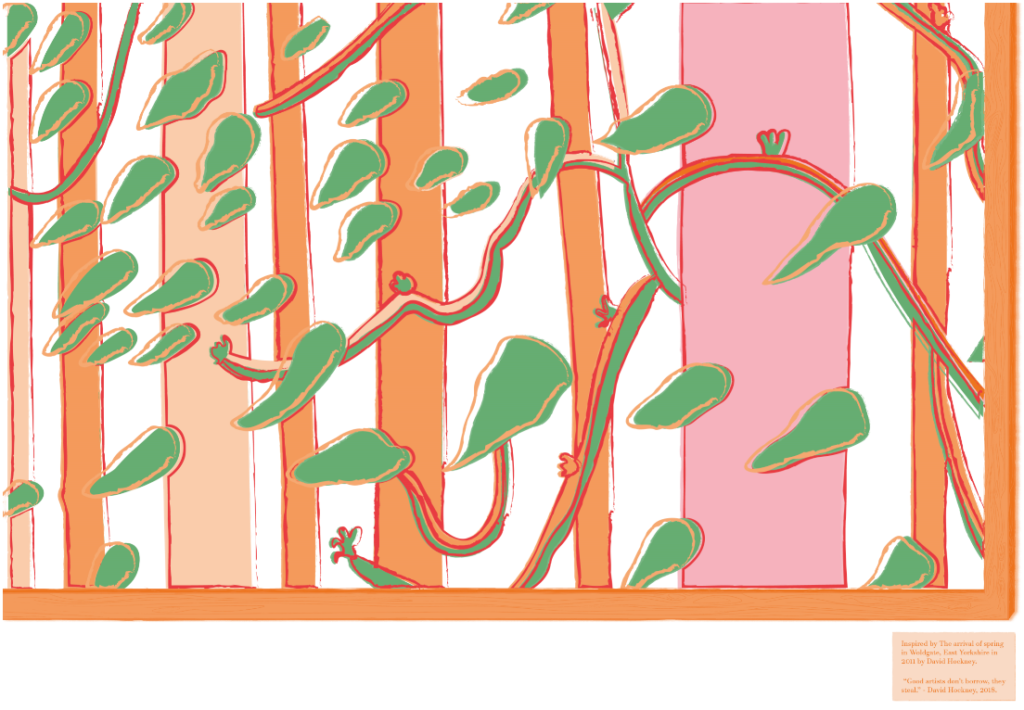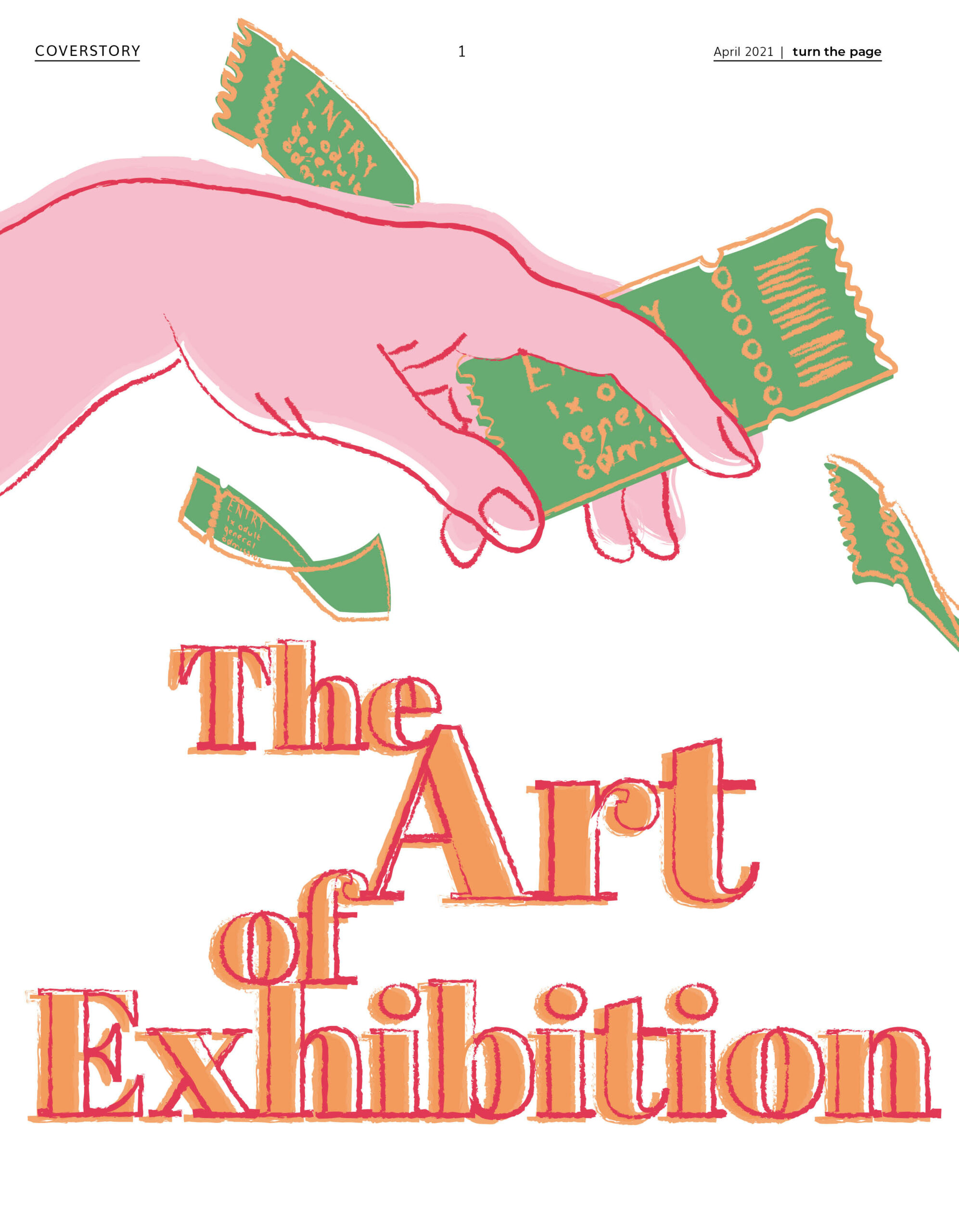It is May 24th, 2016 at the San Francisco Museum of Modern Art. Two teenagers are about to pull the prank of their lives. They sneakily leave a pair of glasses on the floor of an exhibition hall…
The result is just as they had hoped: people flock around it, taking pictures of the pair of glasses, assuming it is part of the exhibition. It is interesting how anything can become art in a museum. No one would have looked twice at the glasses if they had been dropped on the sidewalk. But that made us wonder, what goes on behind the walls of an art exhibition? Creating such a unique experience entails more than meets the eye. As we found out, designing an exhibition is an art in itself!
by Nanko Hefting and Liza Oomens | special thanks to Jacob de Baan

The exhibition experience
The experience of visiting an exhibition starts way before the entrance of the museum hall. You might find out about a new exhibition through a poster on the side of the road, a flyer in a tourist office, or on the site of the museum. After visiting the exhibition, your experience is not complete just yet. You can browse the museum shop to find a little gift as a reminder of your visit, or you can sit down at the museum café with a cup of coffee to discuss what you have just seen. From the entry tickets and floorplan of the museum to the packaging of the gifts in the shop, every element has been well thought out. You might not have realised it, but all these elements have contributed to your exhibition experience.
Teamwork makes the dream work
It is not just a few people who come up with an idea for an exhibition and figure it out themselves. The creation of an art exhibition involves many different departments, each with its own specialisation. Well in advance, a budget needs to be established and artworks need to be picked out. This often involves contact with other museums about loaning arrangements. The department of Education consists of art historians who determine which story is told and what information is presented to the visitors.

The designer’s perspective
So, it has already been decided what is going to be exhibited, but not yet how it will be done. This is where the exhibition designers come in. Within the requirements from all the different departments, there is still a lot of room for the exhibition designers to unleash their creativity. Do you paint the wall a colour that complements the artwork, or do you let the artwork speak for itself? You can place a single artwork on a wall or create a connection between the works by clustering them. The walls can be placed in such a way that the visitor is guided along the works in a certain order, or in a way that allows the visitor to walk around freely. Who says you need walls? A painting can also hang from the ceiling, baring its back for all the world to see. Why not display a painting the way it was conceived, on an easel.
The Van Gogh Museum
When designing for a particular museum, you will need to find your creativity within the boundaries of the style of that museum. Having interviewed Jacob de Baan, we got a look inside the Van Gogh Museum through the eyes of the man who used to manage its branding. What can we say about the way they design an exhibition there? During the interview, Jacob proudly showed us the house style document he had created for the museum. It contained a list of colours, textures, shapes, fonts, and other kinds of guidelines to which everyone had to adhere. These elements were inspired by Van Gogh himself: the shapes and colours that he used in his paintings. If an exhibition designer wishes a wall to be blue, it will be one of Van Gogh’s favourite shades. On one hand, a colour chart like that can seem constraining. However, is it not special to use the same palette as Van Gogh? Besides adding meaning to the colours, it also helps to create unity throughout the entire museum. Looking at the exhibitions that have been in the Van Gogh museum over the years, the colour scheme as well as the rest of the document’s guidelines did not constrain the designers in their creativity, but rather inspired them.

The joy of nature
An example of this creativity was a temporary exhibition about Hockney and Van Gogh: ‘The Joy of Nature’. Every wall was in one solid colour, varying from white to shades of green, orange, yellow, and blue. Not only can you give the area beautiful contrasts, but it also allows you to create different atmospheres through the entire hall. No wall was left unused: from little pillars with a single painting on it to walls exhibiting more than twenty drawings, sketches and studies. Both examples having an overwhelming effect on the visitor. The walls were not just used to display art, they also served as means of separation, and more importantly maybe, means of generating curiosity. Each area of the exhibition was flanked by walls, but never completely. Every corner was like a little surprise, an invitation for the visitor to explore further. Almost every wall had text on them, either in white or in dark grey. Some walls just showed the names of paintings or drawings. Others had entire stories printed on them. It might sound a bit peculiar to use a whole wall for a story of barely 100 words, but it gives both variation and, in a way, makes the story an exhibited piece of art itself. Speaking about text, there is a huge creative opportunity here as well. Some words were big, some were small, some were not painted, but cut out of thick material and glued to the wall, giving it depth.
In the service of the artist
Your exhibition hall is as much a blank canvas as the paintings you will be showing once were. Have the confidence that your work matches those of the masters, even if your name is not on the wall. And most of all, never forget who the exhibition actually belongs to: the artist. Maybe that is the most important thing to keep in mind. As a designer for a museum, you work as part of a larger team that works almost completely behind the scenes. This means you will never be seen. Because the work you create is not for you, about you, or in your name. However important it is to choose the right colours, the right fonts, the right lighting, it will always be in the service of the artist whose artworks are on display.
Read Online
Note: this is a preview
